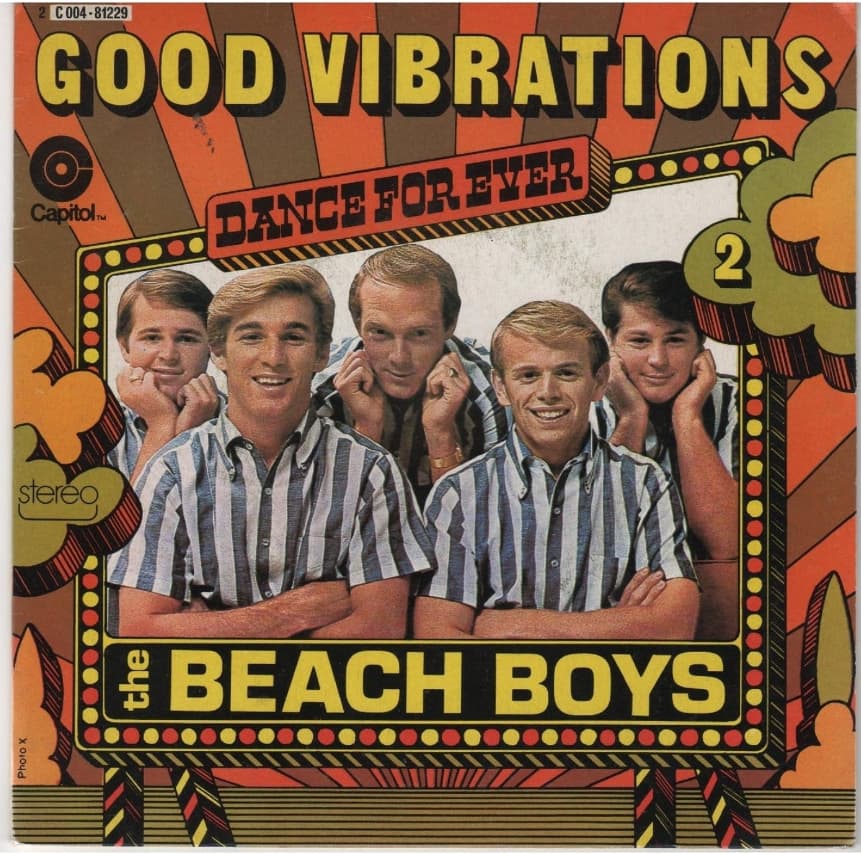
The Beach Boys – The Musical Genius of “Good Vibrations”
The Beach Boys’ “Good Vibrations” is a song that transcended the pop music boundaries of the 1960s, introducing a new era of experimental sounds and arrangements. Released in 1966, this iconic track, led by Brian Wilson’s creative vision, redefined what a pop song could be, reaching number one on the Billboard Hot 100 and earning a place as one of the greatest songs of all time. The song’s lush harmonies, unconventional structure, and innovative use of instruments marked a milestone in rock history, cementing The Beach Boys’ place as trailblazers in music production and artistic expression.
Wilson described “Good Vibrations” as his “pocket symphony,” a term that captures its complexity and ambition. Unlike traditional pop songs of the time, which adhered to straightforward verse-chorus structures, “Good Vibrations” was constructed in fragments, with different sections recorded separately and pieced together. This technique, known as “modular recording,” was groundbreaking and allowed Wilson to build a song with diverse textures and tones, blending everything from psychedelic rock to baroque pop in a cohesive, euphoric experience. The iconic use of the theremin, an instrument that creates an eerie, wavy sound, added a futuristic touch that was unlike anything in popular music. Its haunting, almost mystical sound gave the song a unique signature, setting it apart from the sunny surf rock The Beach Boys were initially known for.
The song opens with Carl Wilson’s smooth, almost delicate vocals singing the line, “I love the colorful clothes she wears.” This introductory verse quickly transitions into the lush harmonies that The Beach Boys are famous for, enveloping the listener in a warm, dreamlike atmosphere. The lyrics speak to a feeling of connection and attraction, with lines like, “I’m picking up good vibrations; she’s giving me excitations,” which reflect an innocent, almost spiritual attraction. The lyrics were penned by Tony Asher and Mike Love, who together captured a sense of wonder and positivity that complemented Wilson’s ambitious musical arrangement.
Musically, “Good Vibrations” is a masterpiece of arrangement. The song moves through multiple key changes and tempo shifts, surprising the listener at every turn. Each section offers something new, from a gentle verse to a sudden, energetic chorus, giving the song a dynamic and unpredictable quality. The harmonies, layered to perfection, serve as a foundation, weaving through different movements with precision and grace. The combination of unconventional instruments, from the theremin to the cello, creates a rich, layered texture that immerses listeners in a soundscape that feels both familiar and otherworldly. The song’s “pocket symphony” structure is a testament to Wilson’s meticulous craftsmanship and vision, setting a new standard for production in pop music.
Lyrically, the song reflects a youthful optimism and a desire for connection that resonated with listeners in the late 1960s. The era was marked by countercultural movements, a push for peace, and a growing interest in spirituality and transcendence. “Good Vibrations” taps into these themes with its focus on the positive, almost mystical energy between people. This element of the song is subtle yet profound, encapsulating the “free love” mentality of the time without being overt. Instead, it offers a universally relatable feeling—the thrill of an emotional connection with another person, whether romantic or platonic, captured in a chorus that feels like a joyful celebration.
The impact of “Good Vibrations” on music and culture is monumental. It not only solidified The Beach Boys’ position as serious artists but also inspired future musicians to experiment with sound and structure. The song’s influence can be seen in genres ranging from psychedelic rock to pop, where artists have continued to push the boundaries of traditional song composition. Even today, it’s celebrated as one of the most innovative pieces in rock history, a testament to the enduring power of creativity and ambition.
In summary, The Beach Boys’ “Good Vibrations” is a timeless classic that embodies the adventurous spirit of the 1960s. Through its complex structure, groundbreaking use of instruments, and evocative lyrics, the song captures the essence of a generation seeking joy, connection, and new experiences. More than 50 years after its release, “Good Vibrations” remains a testament to the power of innovation in music and the enduring appeal of a song that feels as fresh and vibrant today as it did in 1966. For anyone exploring the legacy of The Beach Boys or the evolution of pop music, “Good Vibrations” is an essential listen, a reminder of how creativity and passion can produce something truly unforgettable.